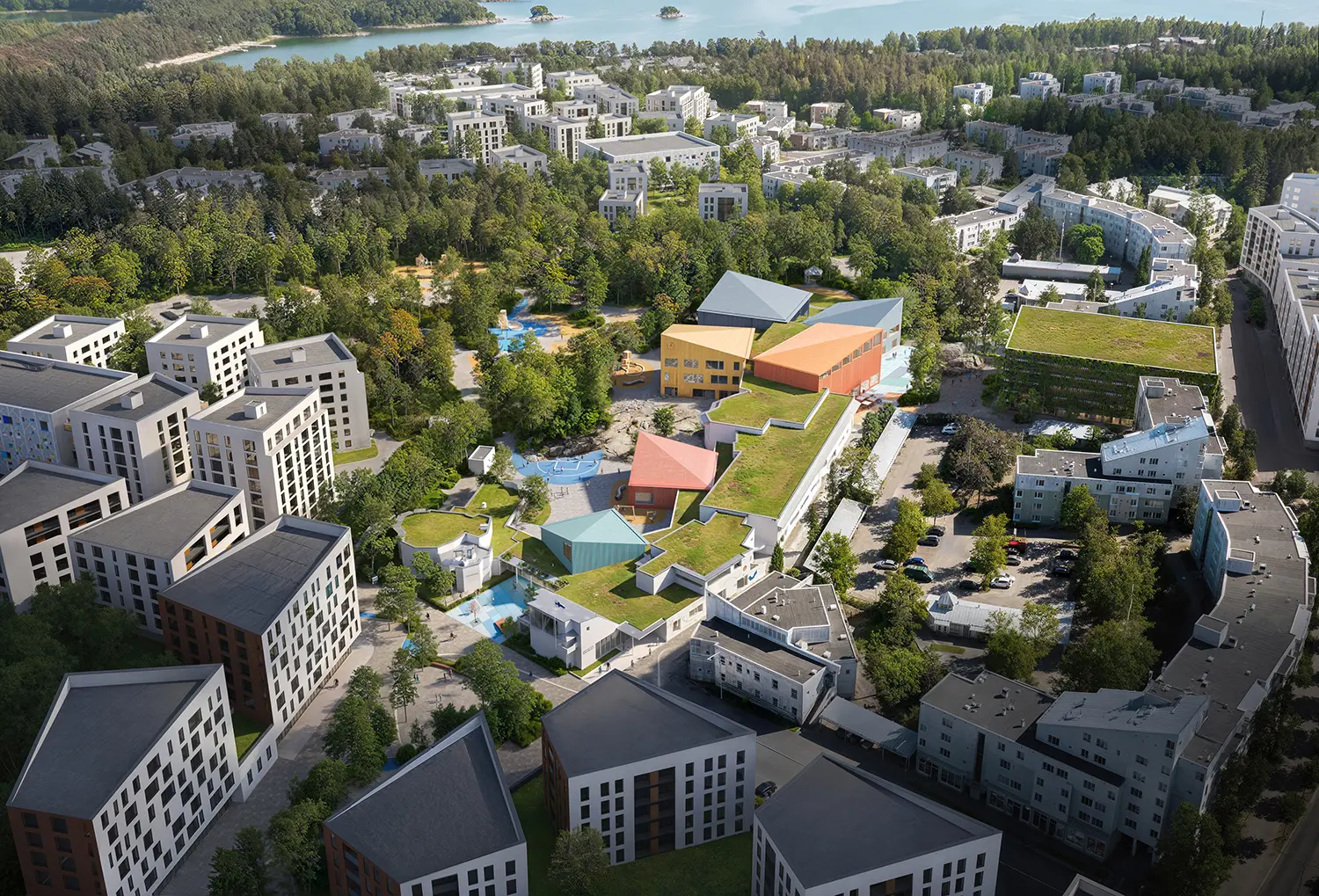Designing a school is like solving a math problem with a dozen variables: the site, number of students, safety regulations, acoustics, lighting, climate, and circulation routes—plus the budget and parents’ opinions.
But the list doesn’t end there. Modern schools must also be inclusive and environmentally friendly. These features are not just optional extras — they are essential in today’s world.
Moreover, all tasks should be completed within reasonable timeframes, bearing in mind regional regulations that could potentially delay the project by months or even years.
It’s impossible to solve such a task in your head. Detailed architecture school rendering helps bring everything together, puts the solution “on the board,” and sees if it works in practice.
Let’s take a look at how visualization helps turn a long list of requirements into a clear, working design.
Benefits of Architectural Renderings for Schools
Visualization of an educational project performs several functions at once: from spatial verification and testing of user scenarios to supporting negotiation processes.
Clear Visual Communication for Non-Experts
3D visualization translates the "architectural" language into a universal visual language that everyone can understand. It’s not just an add-on to the project—it’s the key to meaningful dialogue. Without visualization, a project stays confined to professional circles. With it, the design becomes clear, open to discussion, and easier to coordinate.
When people with different backgrounds and expertise come together to discuss a school project, it’s essential to speak a language they all understand. For architects, technical drawings are second nature, but for school administrators or investors, they may be difficult to interpret.
Enhancing Stakeholder Engagement in School Design
When an idea becomes understandable to parents, teachers, officials, and investors, trust emerges. And with trust comes real support. This is especially important at competition stages, during public hearings, and in the process of investor negotiations: the clearer the solution, the higher the level of trust and willingness to support the project.
One example is the competition for the Meri-Rastila school and youth center in Helsinki. The project by Arkkitehdit Davidsson Tarkela Oy, visualized by CYLIND studio, played a notable role in this.
Three exterior renderings and one interior scene helped demonstrate the project’s blend of historical architecture with modern solutions. The design introduces more natural light through new windows, preserves the existing terrain, and integrates it into the play area. Without these visualizations, the jury wouldn’t have been able to fully grasp the concept’s impact on users and the surrounding environment.
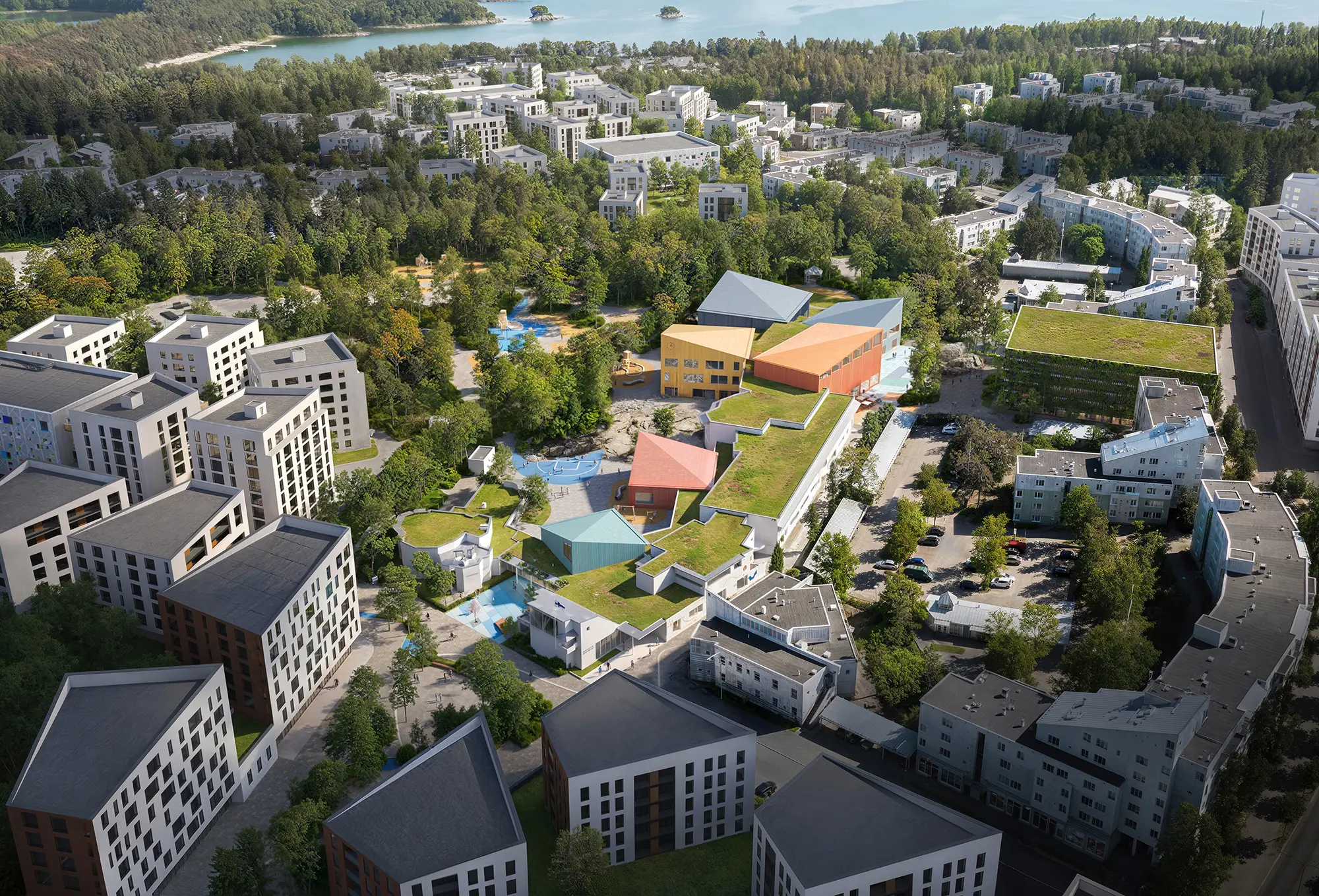
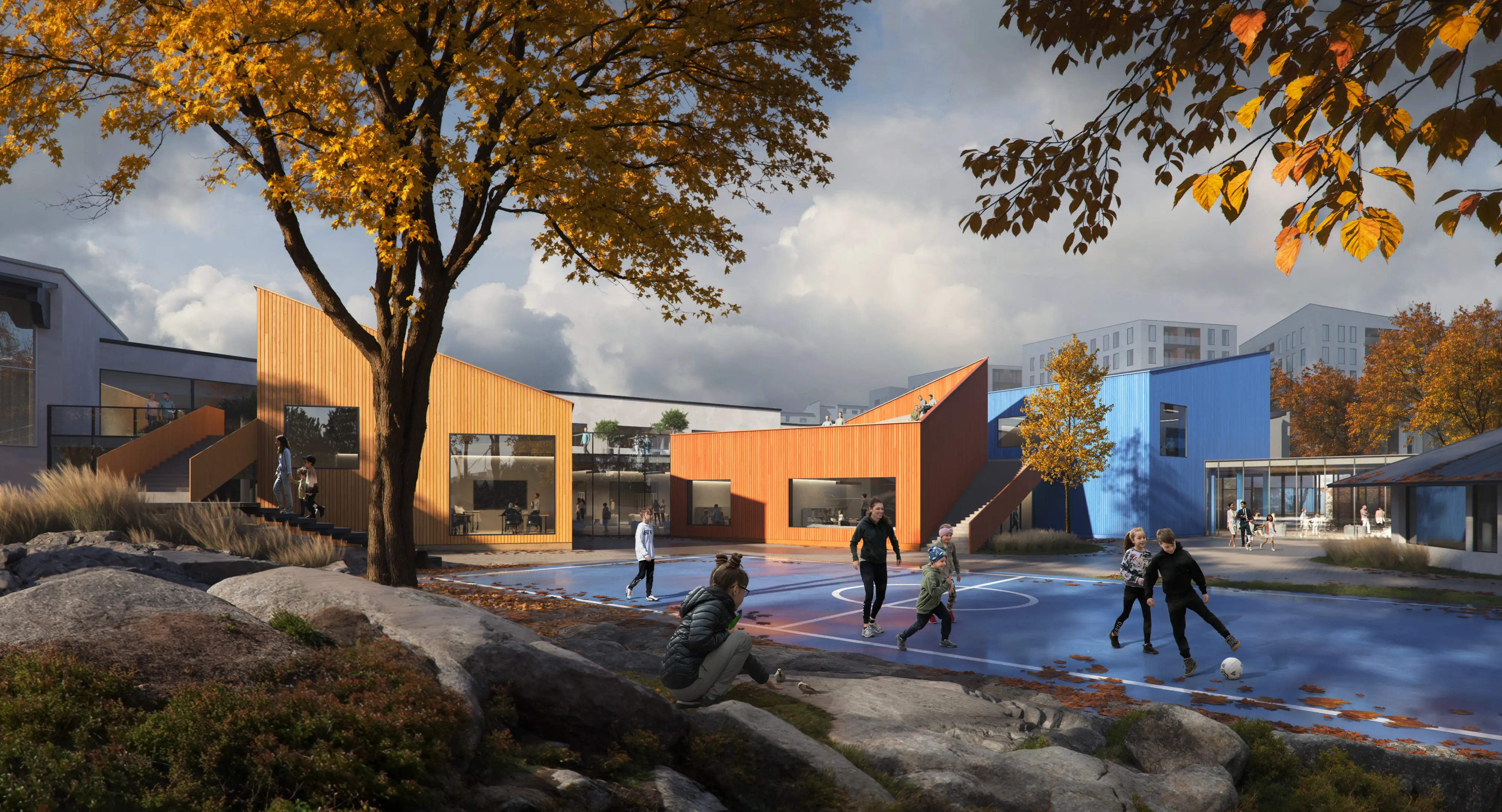
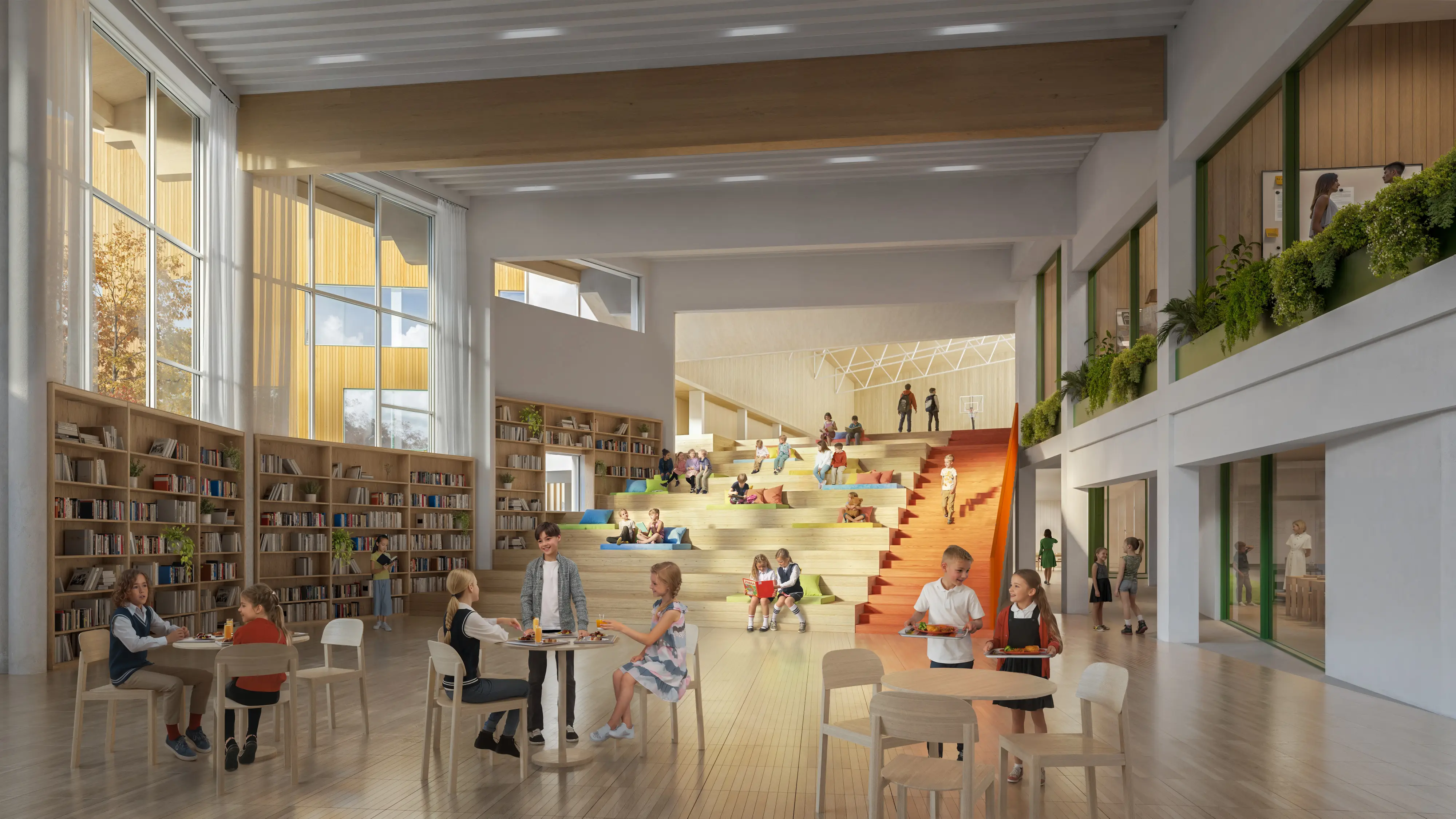
Improved Planning of Floor Plans and Spatial Layouts
A school is a well-thought-out system through which hundreds of students and teachers pass every day, not simply a set of classrooms and corridors. A mistake at this stage leads to more than just inconvenience — it becomes a systemic issue. Students will crowd near entrances, run from one end of the building to the other to avoid being late. Noise, rush, and conflicts at crossing points can turn into a daily routine.
These issues can be anticipated and addressed early with the help of 3D Floor Plan Rendering Services: following the route from the cloakroom to the classroom, assessing furniture layout, and identifying where flows may intersect.
Smoother Approval Processes for School Construction Projects
Visualization helps minimize revisions, increase the client’s confidence, and defend the project without unnecessary iterations.
To speed up the project approval process, explain the following to the stakeholders:
- the spatial logic;
- circulation routes;
- usage scenarios.
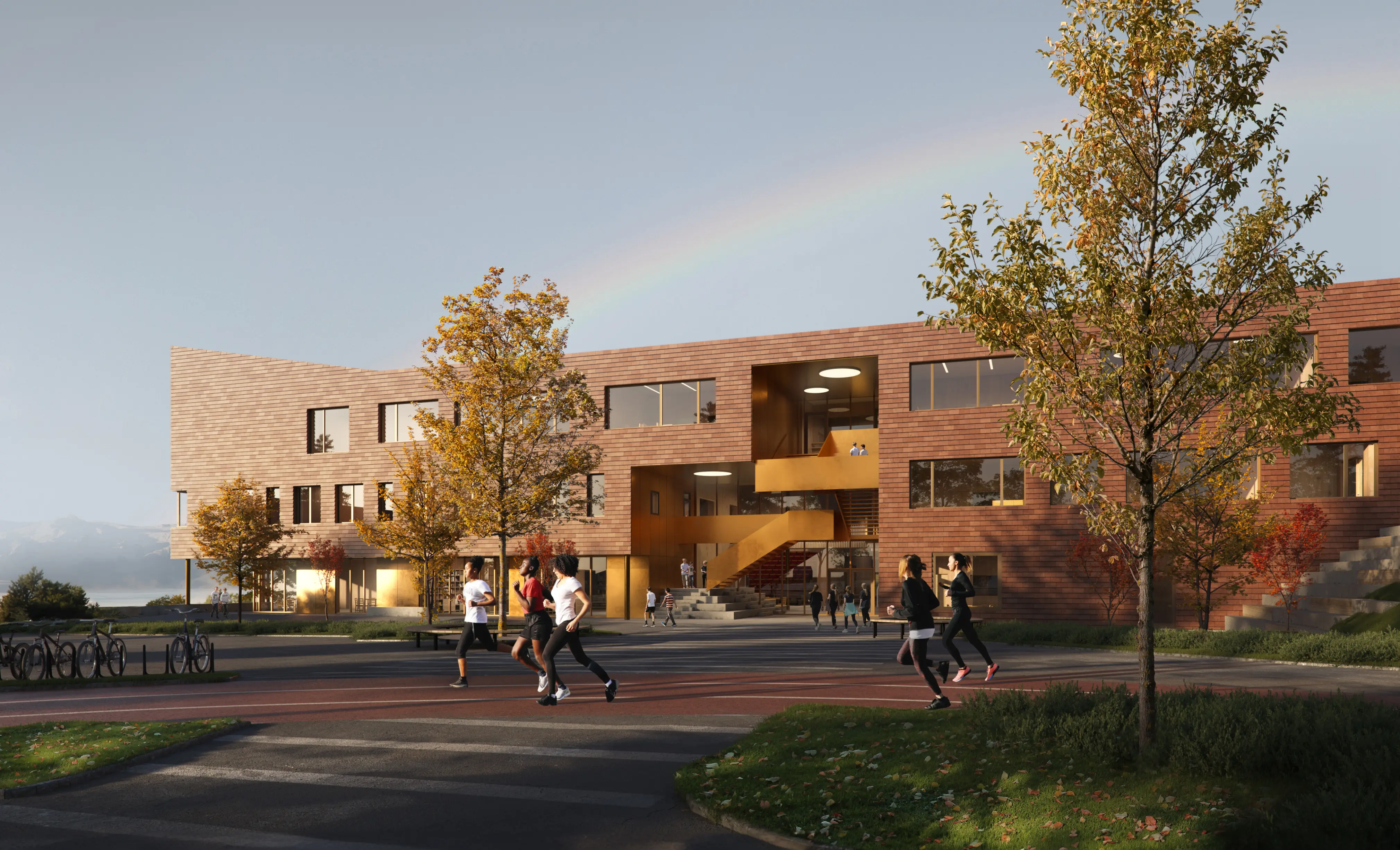
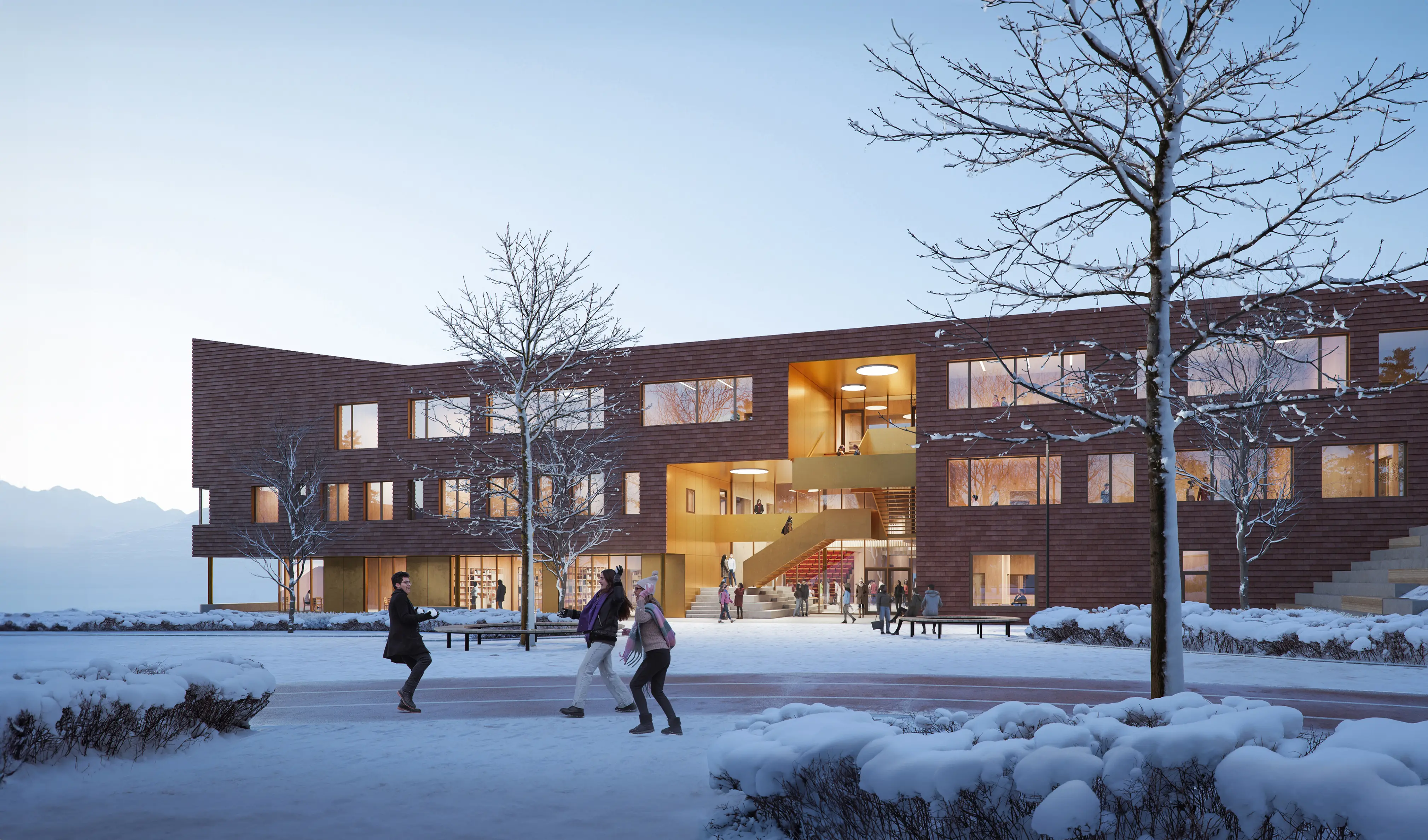
Types of Architecture School Rendering Techniques
In architectural visualization for educational facilities, several high-impact rendering techniques stand out. High-resolution 3D renderings provide detailed, photorealistic images of school buildings, capturing design nuances and material textures. Interactive walkthroughs offer immersive experiences, allowing stakeholders to virtually explore campus projects and assess spatial relationships in real time. Full-site campus visualizations integrate the buildings with surrounding landscapes, showcasing how the design harmonizes with its environment and supports campus planning.
Each technique serves a distinct purpose—from showcasing design details and user experience to contextualizing the project within its broader setting. Combining these approaches delivers a comprehensive understanding that is critical for successful project development and implementation.
High-Resolution 3D Renderings for School Buildings
Photorealistic renderings are crucial for accurately conveying the building’s appearance and atmosphere in real life.
From the outside, it’s about the school’s relationship to its neighborhood — the impression of the façade from a child’s eye level, the visibility of the entrance, whether the building feels open or closed from the street, the activity in the courtyard, the way sunlight touches the façade throughout the day, and the placement of shadows. 3D Exterior Rendering Services provide this insight and help evaluate whether the school feels welcoming and safe or more formal and closed-off.
Through 3D Interior Visualization Services, it becomes possible to demonstrate the space in action — the atmosphere in the lobby during the morning rush, typical gathering points for children, and the flow from cloakrooms to classrooms. One can sense whether a corridor feels too narrow or whether there’s enough natural light in shared areas.
In learning spaces, renderings support the assessment of comfort: ease of seating, visibility of the board, the perceived ceiling height, and potential lighting glare. In the cafeteria, visuals show the layout of the serving line and the circulation of people throughout the space.
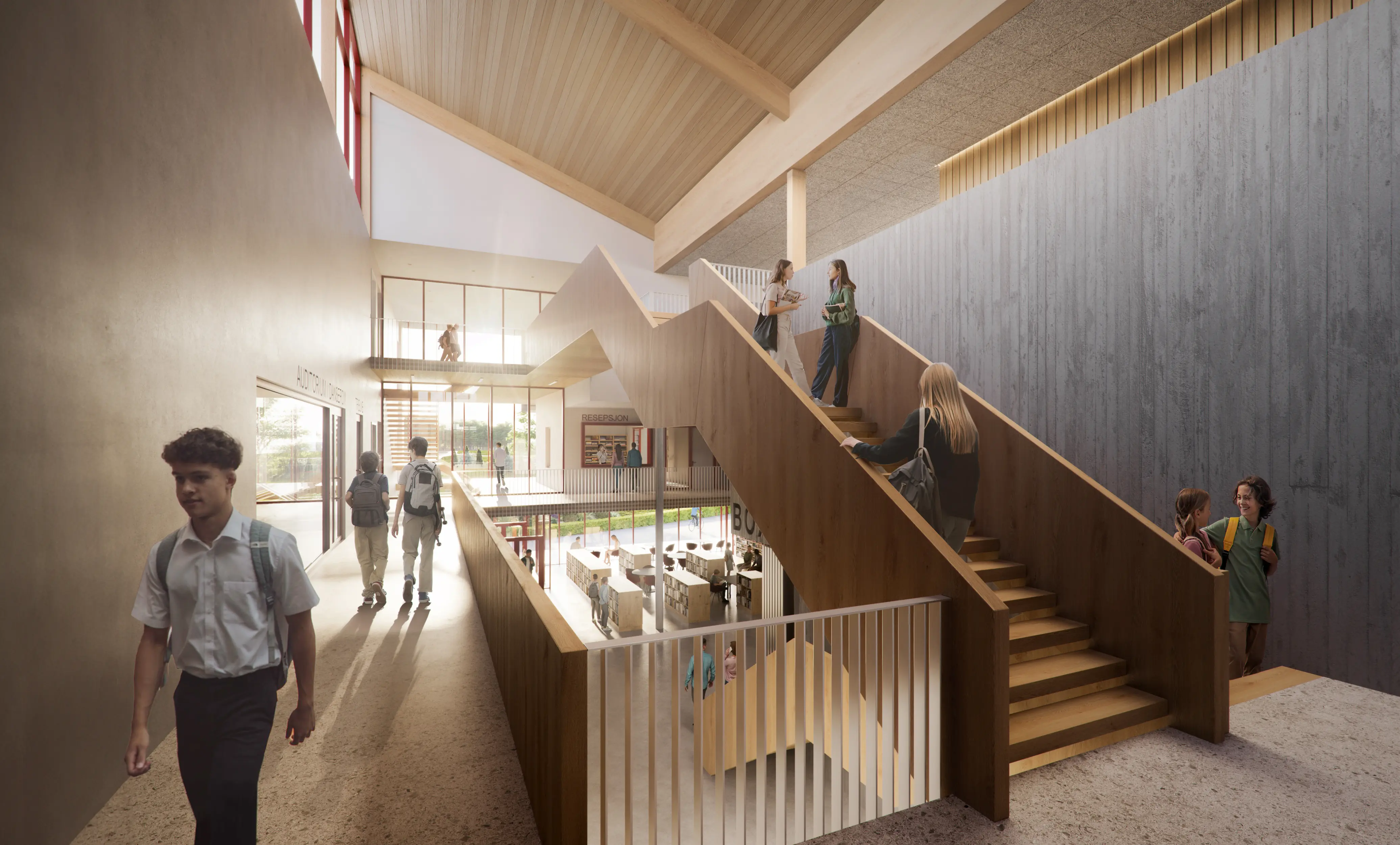
Interactive Walkthroughs for Campus Projects
An interactive tour offers what static renderings cannot—it conveys movement, allowing you to follow a path just as a student, teacher, or parent would: at the right scale, with changing perspectives, and a real sense of pace.
This is especially valuable for projects with a distributed structure: multiple buildings, inner courtyards, and outdoor connections. It’s important to understand where a person might get lost, where they turn intuitively, and where they rely on signage. It shows how navigation works without labels and how well the different functions—educational, athletic, administrative—are connected.
Interactive walkthroughs reveal real user scenarios. Interactive walkthroughs reveal real user scenarios. And if a person takes a wrong turn, the issue lies not with the user, but with the quality of the layout.
Full-Site Campus Visualization with Landscape Integration
A full-campus render with landscape integration allows you to read height differences, surface types, and the overall spatial structure. It becomes clear where children will walk, where they might stay to play, and where they can rest quietly during a break. It also helps assess safety: whether the area is well-observed, how transparent the boundaries are, and whether pedestrian and vehicle routes overlap.
To analyze these scenarios before implementation, 3D Landscape Rendering Services are used. They make it possible to accurately represent the landscape, structure, and behavior of the environment.
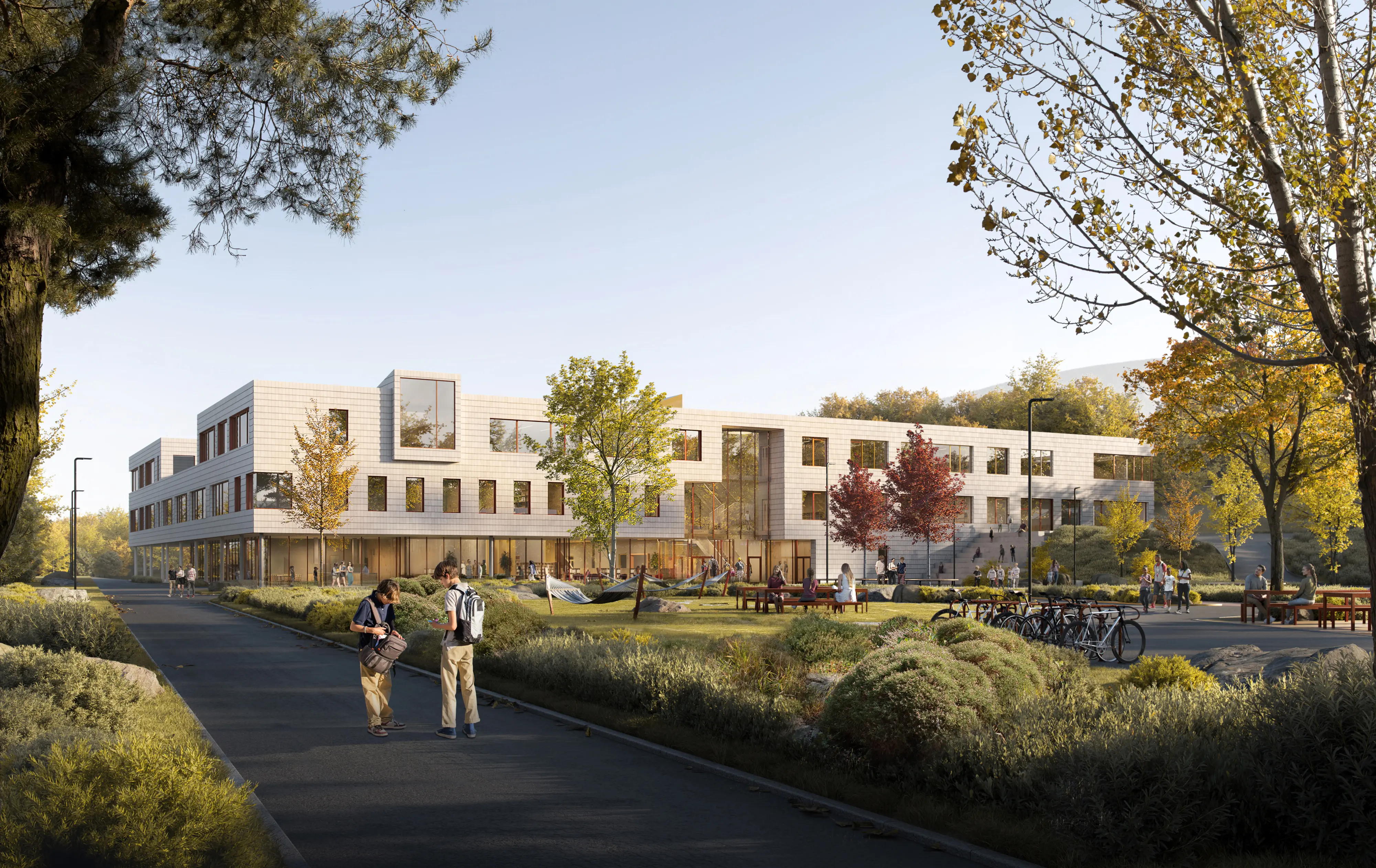
Key Considerations When Choosing a Rendering Provider for Schools
Choosing the wrong contractor can lead to missed deadlines, misaligned objectives, poorly chosen angles, repeated work, and, in the worst-case scenario, an unapproved project. To avoid this, consider the following factors:
Cost of Architectural Renderings for School Projects
A price that’s too low isn’t a sign of efficiency — it’s a sign of risk. It usually means there will be no work on real-life scenarios, no proper site integration, and no meaningful camera angles. There will be no time for dialogue with the architect or for understanding how the school functions.
Professional rendering requires model analysis, sunlight orientation, terrain awareness, entry logic, movement flow, and material accuracy. If the price falls below a reasonable threshold, you’ll likely receive a “picture” — but not a professional tool. That means some design decisions will remain untested until the construction phase.
Typical price range:
- Basic 3D renderings start around $800–$1,500 per image.
- Interactive walkthroughs and animations generally range from $3,000 to $10,000 depending on complexity.
- Full-site campus visualizations with landscape integration usually cost $10,000 and up, reflecting the detailed work involved.
Investing in quality ensures the rendering becomes a valuable decision-making tool rather than just a visual aid.
Turnaround Times and Revisions
The clearer the structure and the shorter the feedback loop, the more stable the process. When selecting a studio, ask for a typical project timeline: when to expect the first draft, how many iterations are included, and how quickly revisions are handled.
In professional studios, a project manager usually handles this process, coordinating stages, tracking deadlines, and serving as a single point of contact for your team. This streamlines communication and reduces your workload.
Experience with Educational Architecture Projects
Experience in residential or commercial real estate doesn’t always translate to educational architecture.
Rendering of primary schools, high schools, and universities requires a clear understanding of high-traffic usage, regulatory constraints, circulation patterns, and age-specific needs.
A more reliable choice is a studio with proven experience in social infrastructure: public spaces, healthcare, cultural, or educational projects. Hospitality experience can also be relevant — see Hospitality 3D Rendering Services — as these types of projects share key traits: high density, diverse user groups, and strict requirements for wayfinding, comfort, and spatial clarity.
Experience with Mixed-Use Development Renderings is another strong indicator, as these projects require balancing multiple functions within one space — a challenge similar to that of schools or community centers.
An additional advantage is international reach. CYLIND Studio collaborates on educational and public architecture projects worldwide — from Northern Europe to the Middle East. We tailor each render to local standards, climate, and spatial logic, as in our projects for Canada, including 3D Architectural Rendering in Montreal.
All images © CYLIND
